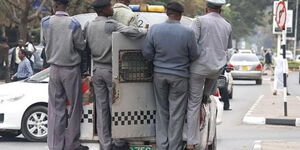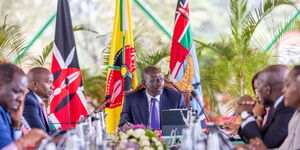Complex details surrounding an alleged plot by the Al Shabaab to kill retired President Mwai Kibaki and former prime minister Raila Odinga have emerged.
Details of the plot emerged from one of Kenya’s submissions to the International Court of Justice (ICJ) in the ongoing maritime case indicating that one terrorist frequently visited Nyeri, and was tasked with documenting President Kibaki’s routine.
The plot which was aided by a local militia group that works closely with the Al-Shabaab occurred in 2012, a year after Kenya deployed the Kenya Defence Forces in Somalia under the Operation Linda Nchi initiative.
“Al Shabaab aspiration to violently overthrow the Kenya state predate the Kenya Defense Forces Official incursion into Somalia in 2011,” the Monitoring Group on Somalia and Eritrea pursuant to a United Nations Security Council (UNSC) report reads in parts.
Kenya’s annexed submission further shows that the terrorist spent over four months between June and October of 2012 scavenging for details which he would then report back to a senior member.
At the same time when the terrorist was camping in Kibaki’s backyard, a local militia group identified as Al-Hijra was spying on ODM party leader Raila Odinga.
The Monitoring Group's report of 2013 which was filed in October 2014 says that an audio recording from Amir Ahmad Iman of the Al-Hajra’s group offers details of the planned murder of Kibaki and Raila.
In one of the audios, Amir warned the Kenyan government that the Operations Linda Mpaka would have dire consequences and that they - the Al-Shabaab - had obtained a restricted document from KDF’s Directorate of Military Intelligence.
“Strap the bombs on me and let me blow myself up in the parliament building of Kenya, let not anyone survive, even Kibaki,” Amir says in the audio recordings.
The same report indicates that Abubakar Shariff Ahmed also known as Makaburi was conspiring with the Somali militia to coordinate recruitments in Kenya and that their target was the retired president and former prime minister.
Previous reports had implicated Makaburi as an alleged supporter of Al Shabaab and was working alongside other fighters.
An Al-Hijra fighter named Rashid was responsible for the logistics of the other militias who were fleeing Kenya to Tanzania where they had a safe house.
On January 24, 2013, during a group meeting, the report showed a confidential informant who had direct access to Rashid said that Rashid was sent to survey Kibaki’s movement in Nyeri and report back to one Titus Nabiswa also known as Mwalimu Khalid.
Rashid is reported to have reported back on January 24, 2013, that Raila had occasionally traveled to Nairobi without his security details.
According to the report, Mwalimu Khalid was an expert in explosives and a staunch planner of attacks. He had managed to recruit members from Nairobi’s Majengo and Mombasa area who were also carrying out surveillance in Kenya.
Mwalimu Khalid was intercepted by security officers on October 28, 2012, while on his way to coordinate an attack in Mombasa. After his arrest, he took the officer to an ally named Omar Faraj who was hiding in Mombasa.
The Group’s report indicates that the two were killed in late 2012 during a shootout.
After Mwalimu Khalid’s death, Al-Hijra made a new plot in which another member, Khubeib Rogo, and Swaleh Abdulmajid were involved. The two were also intercepted by security officers before they could carry out their plans.
During their interrogation, Rogo and Abdulmajid said that Mohamed Seif had been dispatched by Al Shabaab as a suicide bomber. One year later after their interrogation, Al-Shabaab attacked Kenya at the Westgate Shopping Mall.
Kenya submitted the report titled Plots against the State: President, Prime Minister, and Parliament to indicate how the attacks were being planned and carried out from the unending war in Somalia.












